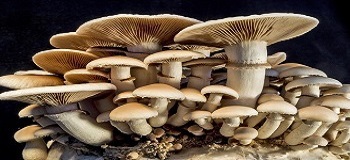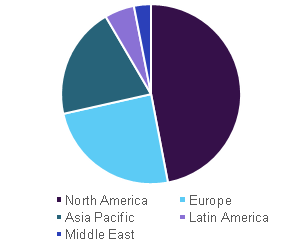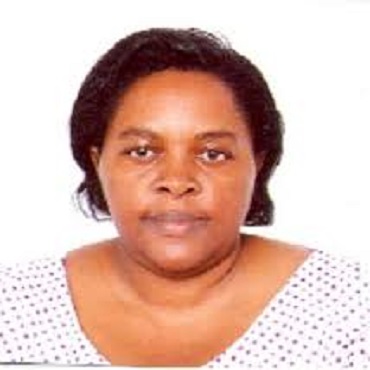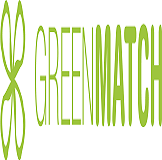
Mycology 2019

Theme: Impact of Mycology and Mushrooms in tending to extreme worldwide wellbeing challenges
Mycology Congress welcomes every one of the members from everywhere through out the world to go to 4th World Mycology & Mushroom Congress amid July 15-16, 2019 in Osaka, Japan which incorporates incite Keynote introductions, Oral talks, Poster introductions, and Exhibitions. In the line with Mushroom Congress, tending to the latest advances over the range of Mycology and Mushrooms look into from essential sciences to general wellbeing. Gathering features will incorporate Fungal Diversity, Fungal Ecology, Fungal Biotechnology, Fungal Symbiosis (Lichens and Mycorrhizae), Pathogenic organisms and Fungal Infections, Bacterial-Fungal Interactions, Mycotoxins, Medical mycology, Industrial Mycology, Food Mycology, Mushrooms, Edible and Medicinal Mushrooms and Entrepreneur Investments Meet. Please go through the conference highlights to explore the wide area of topics we have covered:
Mycology 2019 invites participants, moderators, and exhibitors from everywhere throughout the world to Osaka, Japan. We are pleased to welcome all of you to go to and enroll for the " 4th World Mycology & Mushroom Congress " which will be held on July 15-16, 2019 in Osaka, Japan. The arranging council is preparing for an energizing and useful meeting program including whole addresses, symposia, workshops on an assortment of subjects, blurb introductions, and different projects for members from everywhere throughout the world. We welcome you to go along with us at the Mycology-2019, where you will make certain to have an important involvement with researchers from around the globe. Every one of the individuals from Mycology Meeting sorting outboard anticipates meeting you at Osaka, Japan. In the new bio-economy, growths assume an imperative part intending to major worldwide difficulties, being instrumental for enhanced asset proficiency, making sustainable substitutes for items from fossil assets, overhauling waste streams to significant nourishment and feed fixings, neutralizing way of life ailments and anti-infection opposition through fortifying the gut biota, making crop plants more powerful to survive environmental change conditions, and working as host creatures for generation of new organic medications. This scope of new employment of growths all remain on the shoulders of the endeavours of mycologists over ages: the logical train mycology includes manufactured complete comprehension inside parasitic biodiversity, arrangement, development, hereditary qualities, physiology, biology, pathogenesis, and nourishment. Connected mycology couldn't gain ground without this stage. To unfurl the true abilities of what parasites can improve the situation both condition and man we have to fortify the field of mycology on a worldwide scale.
Session 1. Medical Mycology
Medical mycology is the investigation of contagious contaminations. In insusceptible traded off hosts, fundamental contagious contaminations are typically observed. Fundamental contagious contaminations prompt pneumonic diseases. Parasitic contaminations are typically observed on skin, nails, and hair. Regular parasitic diseases are intertrigo, thrush, and pityriasis versicolor, competitor's foot, nail contaminations, ringworm of the body, ringworm of the groin.
Mycology Conference | Mycology Workshop | Mycology Conferences | Mycology Symposium | Mycology Congress | Mycology Meeting | Mycology 2019 | Mushroom Conferences | Mushroom and Fungi Conference | Mycology Conference | Mycology Meeting | Fungi Meeting | Mushroom Meeting
Session 2. Mushrooms
The mushroom is a spore-bearing, fleshy fruiting body of a fungus, which grows above ground on soil or on the organic food source. The most important microscopic feature for identification of mushrooms is the spores. Their color, shape, size, attachment, and its reaction to chemical tests often can be the crux of identification. Many species of mushrooms seemingly appear overnight, growing or expanding rapidly. In reality, all species of mushrooms take several days to form primordial mushroom fruit bodies, though they do expand rapidly by the absorption of fluids. Within the main body of mushrooms, in the Agaricales, are common fungi like a fairy-ring mushroom, shiitake, enoki, oyster mushrooms, fly agarics, and other amanitas, magic mushrooms. An atypical mushroom is the lobster mushroom, which is deformed, by the mycoparasitic Ascomycete hypomyces lactifluorum. Some are having pores underneath, others have spines. Thus, the term is more one of the common application used for macroscopic fungal fruiting bodies than one having precise taxonomic meaning.
Mycology Conference | Mycology Workshop | Mycology Conferences | Mycology Symposium | Mycology Congress | Mycology Meeting | Mycology 2019 | Mushroom Conferences | Mushroom and Fungi Conference | Mycology Conference | Mycology Meeting | Fungi Meeting | Mushroom Meeting
Session 3. Fungal Biofilms
Fungal biofilms are a growing clinical problem related to significant rates of mortality. Candida albicans is the most notorious of all fungal biofilm formers. However, non-Candida species, yeasts such as Cryptococcus neoformans, and filamentous moulds such as Aspergillus fumigatus, have been shown to be implicated in biofilm-associated infections. Fungal biofilms have distinct developmental phases, including adhesion, colonization, maturation and dispersal, which are governed by complex molecular events. Recalcitrance to antifungal therapy remains the greatest threat to patients with fungal biofilms. This analysis is to discuss our current understanding of the basic biology and clinical implications associated with fungal biofilms.
Mycology Conference | Mycology Workshop | Mycology Conferences | Mycology Symposium | Mycology Congress | Mycology Meeting | Mycology 2019 | Mushroom Conferences | Mushroom and Fungi Conference | Mycology Conference | Mycology Meeting | Fungi Meeting | Mushroom Meeting
Session 4. Antifungal Drug
An antifungal medication is a pharmaceutical fungicide or fungistatic used to treat and prevent mycoses, which are most commonly found on the skin, hair and nails. It works by exploiting differences between mammalian and fungal cells to kill the fungal organism with fewer adverse effects to the host. Antifungal medicines are used in several ways, depending on your specific fungal infection.
Mycology Conference | Mycology Workshop | Mycology Conferences | Mycology Symposium | Mycology Congress | Mycology Meeting | Mycology 2019 | Mushroom Conferences | Mushroom and Fungi Conference | Mycology Conference | Mycology Meeting | Fungi Meeting | Mushroom Meeting
Session 5. Applied Mycology and Biotechnology
Most industrial processes used fungal cells for the bulk manufacturing of organic acids, proteins, enzymes, secondary metabolites and active pharmaceutical ingredients in white and red biotechnology. A number of challenges now need to be addressed to improve our strategies to control fungal pathogenicity and to optimize the use of fungi as sources for novel compounds. Molecular manipulations have been added to mutational techniques as a means of increasing yields of microbial processes and in the discovery of new drugs. Nowadays, fungal biology is a major contributor to the global industry. Still, the finest is yet to come as genomes of new additional species have located and sequenced at some level (cDNA, complete genomes, and expressed sequence tags) and gene and protein arrays will become available.
Mycology Conference | Mycology Workshop | Mycology Conferences | Mycology Symposium | Mycology Congress | Mycology Meeting | Mycology 2019 | Mushroom Conferences | Mushroom and Fungi Conference | Mycology Conference | Mycology Meeting | Fungi Meeting | Mushroom Meeting
Session 6. Fungal Diversity
Fungi are eukaryotic organisms which cannot produce their own energy and depend on enzymatic processes for metabolic activity to absorb nutrition. Its kingdom encompasses tremendous biological diversity, with members covering a wide range of lifestyles, forms, habitats, and sizes. Advances in molecular techniques have formed the base for a boost in studies concerning fungal diversity, and the fast development of next-generation sequencing technologies promises further progress towards a more thorough understanding of fungal diversity and function. The current limited knowledge of fungal diversity and biology complicates an assessment of the conservation status of fungal species and has hindered the development of conservation tools and efforts.
Mycology Conference | Mycology Workshop | Mycology Conferences | Mycology Symposium | Mycology Congress | Mycology Meeting | Mycology 2019 | Mushroom Conferences | Mushroom and Fungi Conference | Mycology Conference | Mycology Meeting | Fungi Meeting | Mushroom Meeting
Session 7. Pathogenic Fungi and Fungal Diseases
Pathogenic fungi cause disease in humans and in other organisms, which is called as fungal pathogenesis. This is particularly true of fungal pathogenesis that there is no single factor that causes or permits these organisms to be agents of diseases that range from superficial to invasive diseases in the plant, animal, and human. A small number of fungi have the ability to cause infections in normal healthy humans by (1) having a unique enzymatic capacity, (2) exhibiting thermal dimorphism and (3) by having an ability to block the cell-mediated immune defenses of the host. There are then many "opportunistic" fungi which cause infections almost exclusively in debilitated patients whose normal defense mechanisms are impaired. More recently described mycoses of this category include hyalohyphomycosis and phaeohyphomycosis.
Mycology Conference | Mycology Workshop | Mycology Conferences | Mycology Symposium | Mycology Congress | Mycology Meeting | Mycology 2019 | Mushroom Conferences | Mushroom and Fungi Conference | Mycology Conference | Mycology Meeting | Fungi Meeting | Mushroom Meeting
Session 8. Mushroom for Health Immune System and Cancer
Edible mushrooms are the fleshy fruit bodies of several species of macro-fungi. They can appear either below ground or above ground where they may be picked by hand. Edibility may be defined by criteria that include the absence of poisonous effects on humans and desirable taste and aroma. Mushrooms play extremely important roles in the ecosystem, and some are famously delicious. Some are also famously deadly. In recent years has focused on various immunological and anti-cancer properties of certain mushrooms, they also offer other potentially important health benefits, including antioxidants, anti-hypertensive and cholesterol-lowering properties, liver protection, as well as anti-inflammatory, anti-diabetic, anti-viral and anti-microbial properties. These properties have attracted the interest of many pharmaceutical companies, which are viewing the medicinal mushroom as a rich source of innovative biomedical molecules. Mushrooms contain disease-busting polysaccharides, glycoproteins, ergosterols, triterpenoids, and immune-boosting chemicals. They can also be used to bolster a declining immune system during aging.
Mycology Conference | Mycology Workshop | Mycology Conferences | Mycology Symposium | Mycology Congress | Mycology Meeting | Mycology 2019 | Mushroom Conferences | Mushroom and Fungi Conference | Mycology Conference | Mycology Meeting | Fungi Meeting | Mushroom Meeting
Session 9. Fungal Interactions
Bacterial and fungal interactions can form a range of physical associations that depend on various modes of molecular communication for their development and functioning. Consequences of bacterial-fungal interactions have profound consequences for both organisms and changes in the bacterial and fungal partners' physiology, life cycles, and survival. Applications of BIFs found in various biological fields i.e. Food processing, fermentation and brewing, cheese ripening, bioremediation of pollutants, natural product discovery and synthetic biology. Mixed bacterial-fungal communities play a key role in determining the taste, quality, and safety of a wide range of foods, like wine production, cheese manufacture involves complex microbial ecosystems where BIFs play a central role.
Mycology Conference | Mycology Workshop | Mycology Conferences | Mycology Symposium | Mycology Congress | Mycology Meeting | Mycology 2019 | Mushroom Conferences | Mushroom and Fungi Conference | Mycology Conference | Mycology Meeting | Fungi Meeting | Mushroom Meeting
Session 10. Applied Food Mycology
The presence of fungi in food has been both advantage and problems to food stores. Fungi can spoil large quantities of food and produce dangerous toxins that threaten human health; however, fungal spoilage in certain foods can produce a unique, highly prized food source and there are some very effective fungal-derived medicines. A thorough understanding of the vast body of knowledge relating to food mycology requires an inclusive volume that covers both the beneficial and detrimental roles of fungi in our food supply. These include food groups such as bakery products, dairy products, beverages (e.g. fruit juices), dried fruits and nuts, and confectionary. Fungi can also present health risks by the production of specific toxic agents called mycotoxins, which are often poorly understood but are being increasingly recognized as agents of both acute and chronic toxicity in humans and animals. This creates an opportunity in research towards the fungi and yeasts, and the problems they can cause in foods, in terms of spoilage and health effects. It will present a balanced view of the importance of these agents in the context of the modern food industry.
Mycology Conference | Mycology Workshop | Mycology Conferences | Mycology Symposium | Mycology Congress | Mycology Meeting | Mycology 2019 | Mushroom Conferences | Mushroom and Fungi Conference | Mycology Conference | Mycology Meeting | Fungi Meeting | Mushroom Meeting
The worldwide antifungal medications showcase measure was esteemed at USD 10.7 billion of every 2015 and is required to observe development because of the rising frequency of parasitic diseases including aspergillosis and candidiasis. These diseases may prompt passing in patients with a traded off safe framework, for example, in people harassed with AIDS and leukemia, and are consequently named as artful contaminations. The expanding commonness of irresistible illnesses and healing center procured diseases is relied upon to fuel the interest for therapeutics over the figure time frame.

Contagious contamination is found to assault both shallow and foundational parts of the body, in the skin, eye, mouth, and vagina, prompting ailments, for example, competitor's foot, parasitic meningitis, and ringworm, which are dealt with utilizing antifungal items. An extensive variety of fungicidal arrangements, for example, creams, splashes, tablets, and infusions are accessible and expanding reception of these items is anticipated to drive the request throughout the following seven years.
Regional Insights
North America, by virtue of high patient mindfulness levels and R&D power relating to new medication advancement, drove the market in 2015 with an offer of 47.0%. Be that as it may, its offer is required to decrease by 2025 inferable from the development of different districts, for example, the Asia Pacific and Latin America, growing at a speedier development rate.

Asia Pacific is anticipated to witness the fastest CAGR during the forecast period. The presence of huge target population, growing establishment of healthcare facilities, and high unmet clinical needs related to fungal diseases are anticipated to provide a potential growth platform to this region for pharmaceutical players.
Major Microbiological University worldwide:
-
Harvard University, USA
-
University of Oxford, UK
-
University of Washington, USA
-
University of Helsinki, Finland
-
Leeds Beckett University, England
-
University of Gothenburg, Sweden
-
Sapienza University of Rome, Italy
-
University of Wisconsin, Madison
-
The University of Queensland, Australia
-
Auckland University of Technology, New Zealand
- Applied Mycology: Research, Application and Challenges
- Fungal Biofilms
- Pathogenic Fungi and Fungal Diseases
- Antifungal Drug
- Medical Mycology and Biotechnology
- Fungal Diversity
- Mushroom for Health Immune System and Cancer
- Fungal Interactions
- Mycotoxins,Lichens and Mycorrhizae
- Lichens and Mycorrhizae
- Medical Microbiology Reports
10 Organizing Committee Members
4 Renowned Speakers
Chandan Maurya
Dayalbagh Educational Institute
India
Thidaporn Theunpao
MSc, KMUTT
Thailand
Nadia Jabeen
Hazara university Mansehra
Pakistan
Donatha D. Tibuhwa
University of Dar es Salaam
Tanzania



































































































































